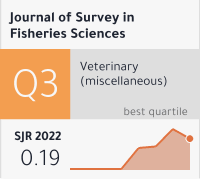Possible Solutions to the Associated Cytotoxicity of Silver Nanoparticles
DOI:
https://doi.org/10.53555/sfs.v11i4.2945Keywords:
Silver Nanoparticles, cytotoxicity, characterization methods, physiological sensing.Abstract
Nanotechnology is the emerging field because of its antimicrobial and antibacterial activities. Because of these activities they can be used in different industries now-a-days. Because of this reason silver nanoparticles can be used in the drugs which may treat many fungal, bacterial and microbial diseases in human beings. Besides of these application, its concern related to the biological impacts of silver nanoparticles are also studied. Also their emerging risks and their problems in environment and living organisms are also studied. Many studies have been published in which their cytotoxicity effects on human health and on environment are investigated. An important factor related to the cytotoxicity of nanoparticles is that they may also increase the damage of genetic material as they can cross the cell membrane and nucleus because of their small size. So, there is an interest in studying the cytotoxicity of silver nanoparticles and also gives its possible solution to reduce its toxicity which may harm the human body or environment. For this reason, difference sizes of nanoparticles were used and synthesized to check their effect on environment and human body. Many studies are required for the solutions of the toxicity related to silver nanoparticles. This review is related to the recent works and publications and researches on the solutions of the toxicity related to silver nanoparticles and also about the more and safe application of silver nanoparticles. This study tells us that the silver nanoparticles which are naturally occurring are not toxic to the human body and environment instead of the silver nanoparticles which are artificially synthesized. This review also tells that that the human cells shows resistivity towards the cytotoxicity of silver nanoparticles while the silver nanoparticles toxicity may affect other organs very much. Also it concludes that how we can resist the toxicity of the chemically synthesized silver nanoparticles.









